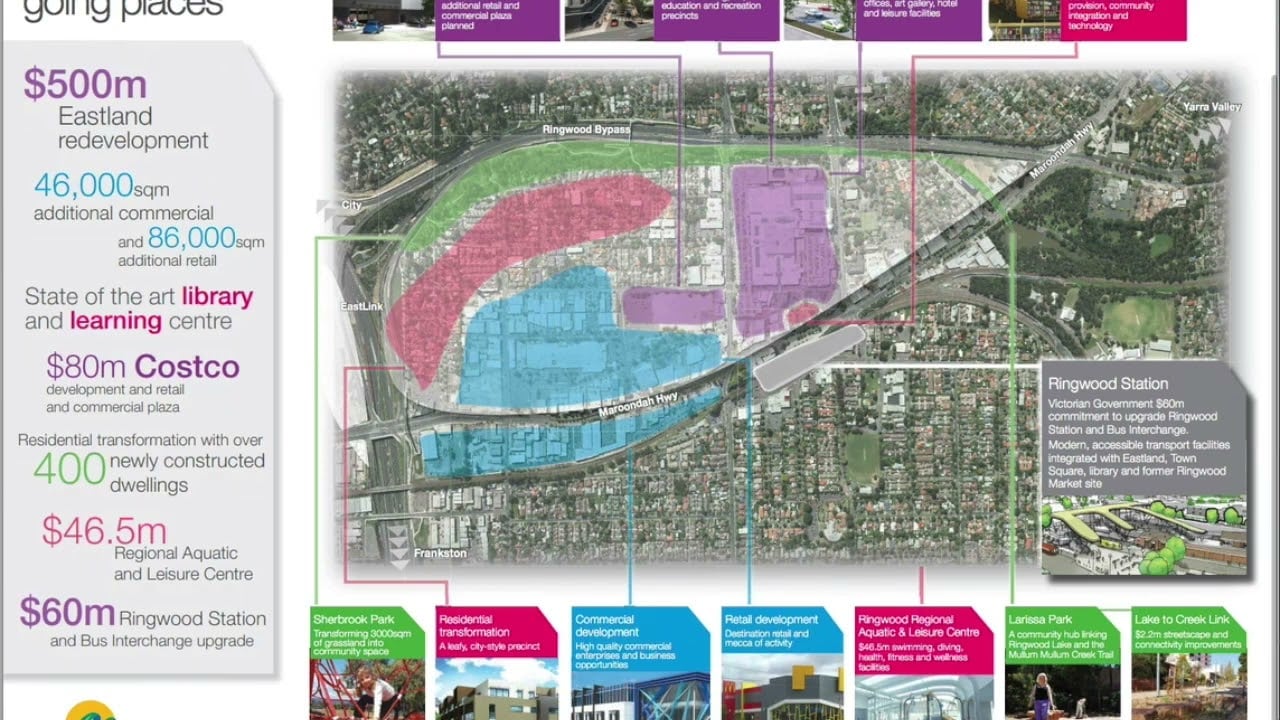Validating Signals - Stage 2
Here is a detailed walkthrough on performing in-depth research on suburbs for property investment by leveraging council websites and other resources. This process is crucial for identifying potential growth areas and making informed decisions. Below are key insights from the video:
Council Websites
The starting point is exploring council websites for suburbs of interest (e.g., Frankston, Barrack). These sites offer comprehensive details on local planning schemes, upcoming infrastructure projects, and developments, which are vital for assessing the suburb’s potential.
Planning Schemes
Key to the research is understanding the planning schemes and future projects planned by the council. For example, in the video, we discussed finding documents like the Jubilee Park master plan on Frankston’s city council website, which outlines upcoming developments.
Infrastructure Developments
Information on infrastructure support and upgrades is sought after, as it indicates the suburb’s future readiness and potential for growth. This includes projects like new aquatic centres, shopping centre expansions, and educational facilities.
City Plans
The importance of city-wide plans, such as Brisbane’s City Plan 2000 or Melbourne’s 2050 plan, is highlighted. These documents provide a vision for the city’s development and are essential for investors to align their projects with governmental objectives.
Interactive Tools
Council websites also offer interactive mapping and development tools, allowing investors to access property planning and development information, track applications, and understand how a proposed development aligns with the city’s planning scheme.
Market Research
Beyond council websites, some platforms like realestate.com.au for neighborhood insights and Property Observer for market trends, provide a broader perspective on the suburb’s attractiveness.
Search Techniques
A practical search strategy shared is using specific keywords like “urban renewal” along with the suburb’s name to find relevant development projects and planning initiatives.
Case Studies
You will find personal experiences in the video with projects in suburbs like Ringwood and Brisbane, emphasising the capital growth witnessed due to strategic investment based on thorough research.
Insights based on numbers:
The video mentions significant financial investments in infrastructure, such as a $500 million expansion of Eastland Shopping Center and a $46.5 million Regional Aquatic and Leisure Center in Ringwood, indicating substantial governmental and private sector commitment to suburb development.
Frequently Asked Questions
Why are council websites important for property investment research?
Council websites are crucial as they offer comprehensive details on local planning schemes, upcoming infrastructure projects, and developments. This information is vital for assessing a suburb’s potential for growth, future readiness, and overall attractiveness for investment.
What are planning schemes and why are they key to investment research?
Planning schemes are documents that outline future projects planned by the council, such as the Jubilee Park master plan in Frankston. These documents are key to investment research because they provide insights into the suburb’s developmental direction, helping investors align their projects with governmental objectives.
How can information on infrastructure developments assist investors?
Information on infrastructure developments, such as new aquatic centers, shopping center expansions, and educational facilities, indicates the suburb’s future readiness and potential for growth. This makes such areas more attractive to investors due to the anticipated increase in demand and property values.
What role do city-wide plans play in property investment?
City-wide plans, like Brisbane’s City Plan 2000 or Melbourne’s 2050 plan, offer a vision for the city’s development. They are essential for investors as they provide a framework within which to align their projects, ensuring compatibility with long-term governmental objectives and securing the potential for sustainable growth.
What are the benefits of using interactive tools on council websites?
Interactive tools on council websites allow investors to access detailed property planning and development information, track applications, and understand how proposed developments align with the city’s planning scheme. These tools facilitate a more precise and informed investment decision-making process.
Why is market research important beyond council websites?
Market research is crucial beyond council websites because it offers a broader perspective on the suburb’s attractiveness. Platforms like realestate.com.au provide neighborhood insights, and Property Observer offers market trends, enabling investors to gauge the overall market sentiment and potential for capital growth.
What search techniques can enhance property investment research?
A practical search strategy involves using specific keywords like “urban renewal” along with the suburb’s name. This approach helps find relevant development projects and planning initiatives, providing deeper insights into the suburb’s future prospects.
How do case studies contribute to understanding property investment?
Case studies, such as the speaker’s personal experiences with projects in suburbs like Ringwood and Brisbane, illustrate the practical application of research strategies and the capital growth achieved. They serve as real-world examples of how thorough research can lead to successful investments.
Test Your Knowledge
Multiple Choice Questions For Property Investment Research
1. What is the initial step in performing in-depth research on suburbs for property investment?
A) Searching for the most expensive properties.
B) Reviewing council websites for suburbs of interest.
C) Conducting door-to-door surveys.
D) Consulting only real estate agents.
2. Why are planning schemes critical to property investment research?
A) They offer historical data on property prices.
B) They outline future projects and developments planned by the council.
C) They list all properties available for sale.
D) They provide information on past suburban disputes.
3. What type of information indicates a suburb’s future readiness and potential for growth?
A) Declining population trends.
B) Information on infrastructure support and upgrades.
C) Historical weather patterns.
D) Previous years’ tax rates.
4. How do city-wide plans benefit property investors?
A) They guarantee profit on investments.
B) They detail every residential property in the city.
C) They provide a vision for the city’s development, essential for aligning projects with governmental objectives.
D) They include contact information for all city council members.
5. What advantage do interactive tools on council websites provide to investors?
A) Instant financing options for property purchases.
B) Access to detailed property planning and development information.
C) Virtual tours of every property listed for sale.
D) Automatic property value appraisals.
6. Why is it important to conduct market research beyond council websites?
A) Council websites often contain outdated information.
B) To understand the broader market sentiment and potential for capital growth.
C) Because council websites only list government-owned properties.
D) Market research is not necessary if council information is comprehensive.
7. What search strategy enhances property investment research?
A) Using the suburb’s postal code only.
B) Searching for properties by color.
C) Using specific keywords like “urban renewal” along with the suburb’s name.
D) Searching with vague terms like “houses” or “apartments.”
8. How do case studies of specific suburbs contribute to understanding property investment?
A) They provide a distraction from the complexities of research.
B) They illustrate the successful application of research strategies and the capital growth achieved.
C) They list all successful investors in the area.
D) They are only useful for historical analysis and have no future relevance.
Answers:
- B) Reviewing council websites for suburbs of interest.
- B) They outline future projects and developments planned by the council.
- B) Information on infrastructure support and upgrades.
- C) They provide a vision for the city’s development, essential for aligning projects with governmental objectives.
- B) Access to detailed property planning and development information.
- B) To understand the broader market sentiment and potential for capital growth.
- C) Using specific keywords like “urban renewal” along with the suburb’s name.
- B) They illustrate the successful application of research strategies and the capital growth achieved.
Assignment
In-Depth Suburb Research for Property Investment
Objective
Apply the concepts learned from the video and article to conduct comprehensive research on a suburb of your choice, assessing its potential for property investment. This assignment is designed to simulate real-world property investment research using digital resources, council websites, and market analysis tools.
Part 1: Initial Research and Planning
Select a Suburb:
Choose a suburb you find interesting or potentially lucrative for property investment. Provide a brief justification for your choice.
Explore Council Websites:
Identify and list the local council website for your selected suburb.
Summarize the available resources on this website that could aid in property investment research, such as planning schemes, development projects, and interactive tools.
Part 2: In-Depth Analysis
Planning Schemes and Development Projects:
Locate and review any planning schemes or documents outlining future projects in your selected suburb, similar to the Jubilee Park master plan in Frankston. Summarize the key developments and their potential impact on property values.
Infrastructure Developments:
Identify any planned or ongoing infrastructure developments in the suburb (e.g., new aquatic centers, shopping center expansions, educational facilities). Discuss how these developments indicate the suburb’s future readiness and potential for growth.
City-Wide Plans:
Research and summarize any relevant city-wide plans that encompass your suburb, noting how these plans could influence investment decisions.
Part 3: Market Research
Online Platforms:
Utilize platforms like realestate.com.au and Property Observer to gather insights on neighborhood appeal and market trends in your suburb. Highlight key findings that could influence investment attractiveness.
Part 4: Advanced Search Techniques
Keyword Searches:
Conduct searches using specific keywords (e.g., “urban renewal” + [suburb name]) to find relevant development projects and planning initiatives not covered by council websites. Document your search process and summarize your findings.
Part 5: Case Study Analysis
Apply Case Study Lessons:
Reflect on the case studies mentioned (e.g., Ringwood and Brisbane) and compare them to those of your selected suburb. Based on your research, discuss any similarities or differences in the investment potential.
Part 6: Comprehensive Summary
Final Assessment:
Based on your research, provide a comprehensive assessment of the selected suburb’s potential for property investment. Include factors such as growth potential, infrastructure developments, and alignment with city-wide plans.
Reflection:
Reflect on the research process and the tools used. Discuss any challenges faced and how you overcame them. Evaluate how the insights from “Validating Signals - Stage 2” informed your research and conclusions.
Submission Guidelines:
- Your assignment should be submitted as a typed document, clearly sectioned according to the parts outlined above.
- Provide references or links to the sources of information you used, especially for council websites, planning documents, and market research platforms.
- Your reflection should provide personal insights and learnings from the assignment, demonstrating an understanding of the material covered in the article.



